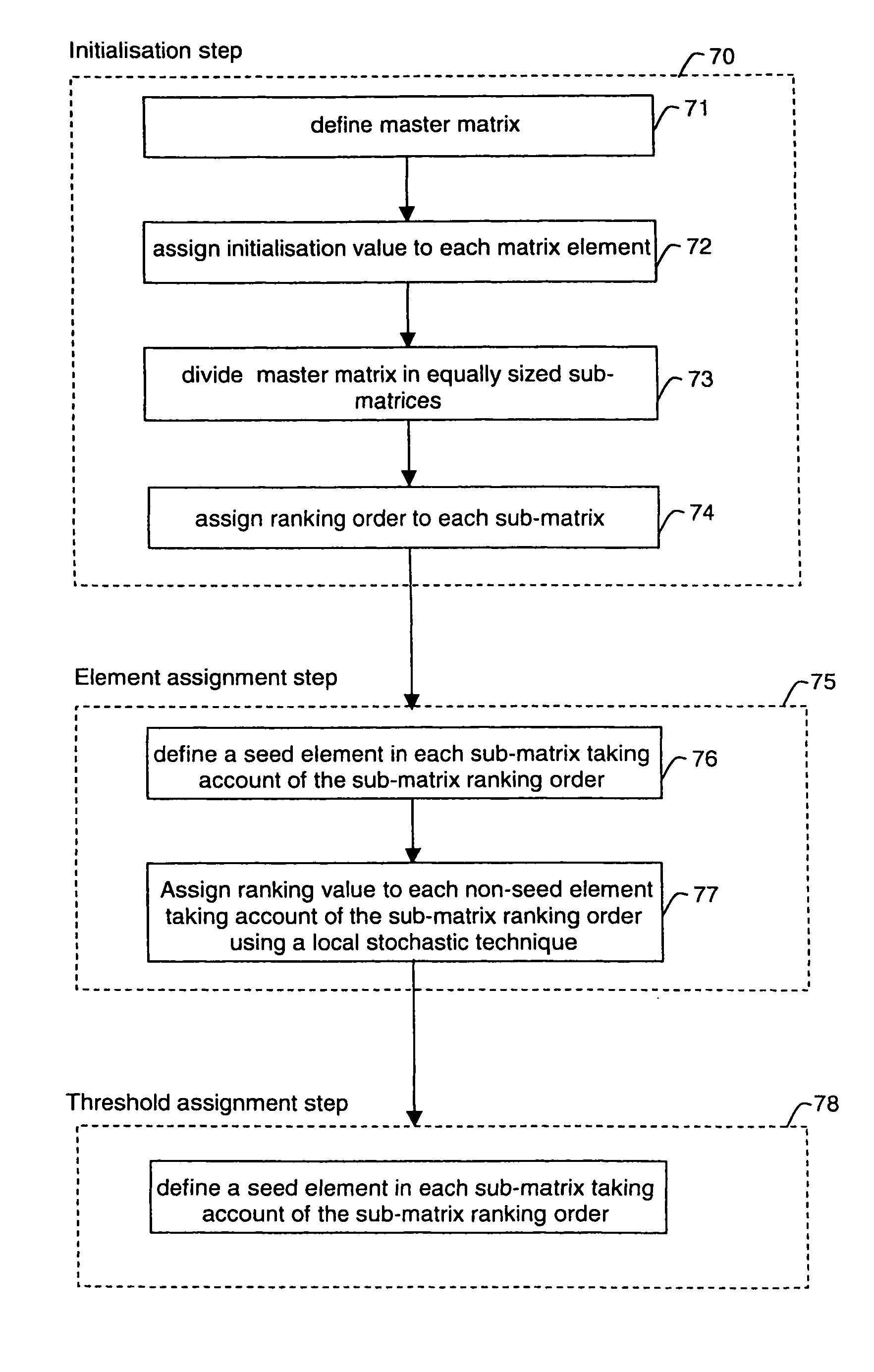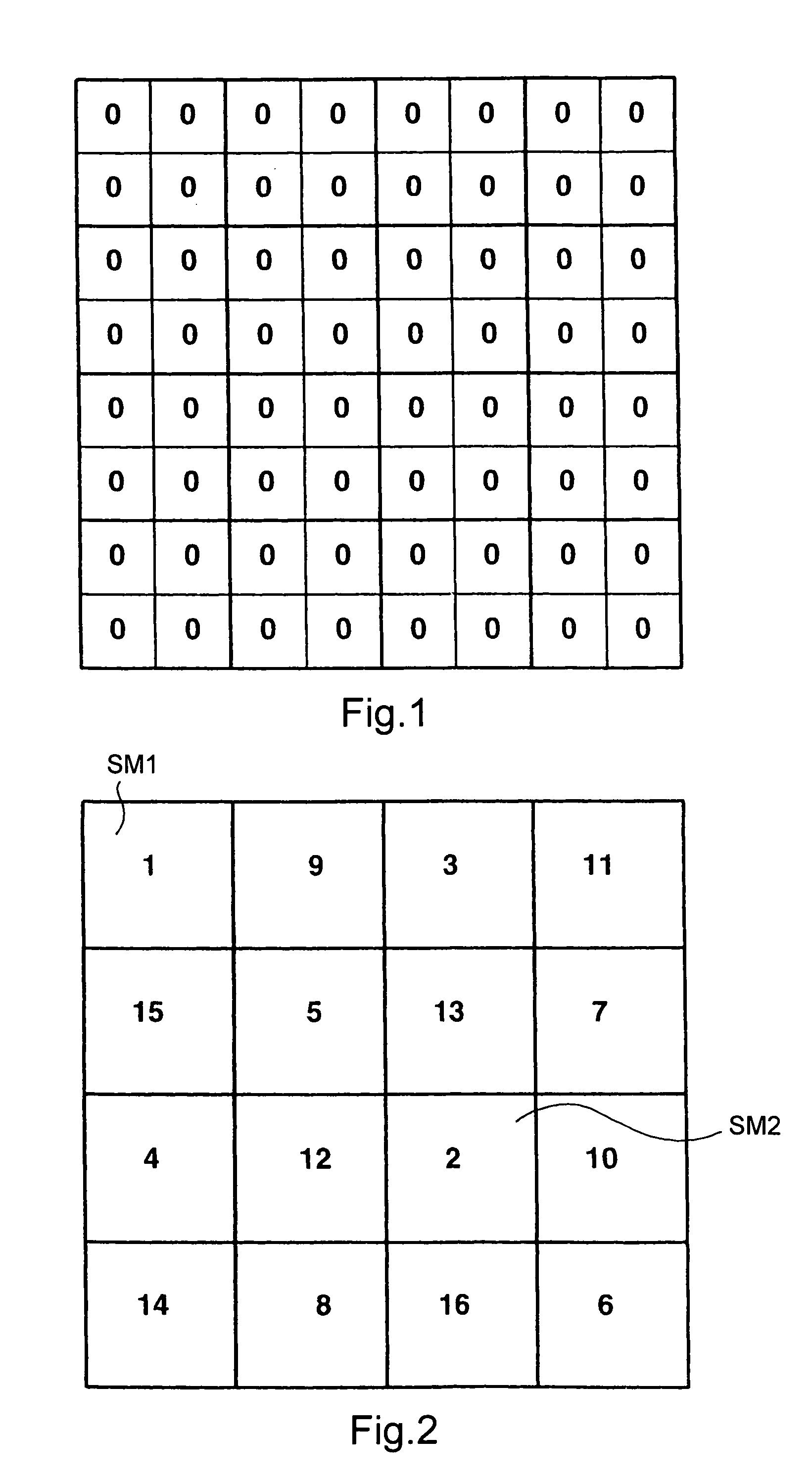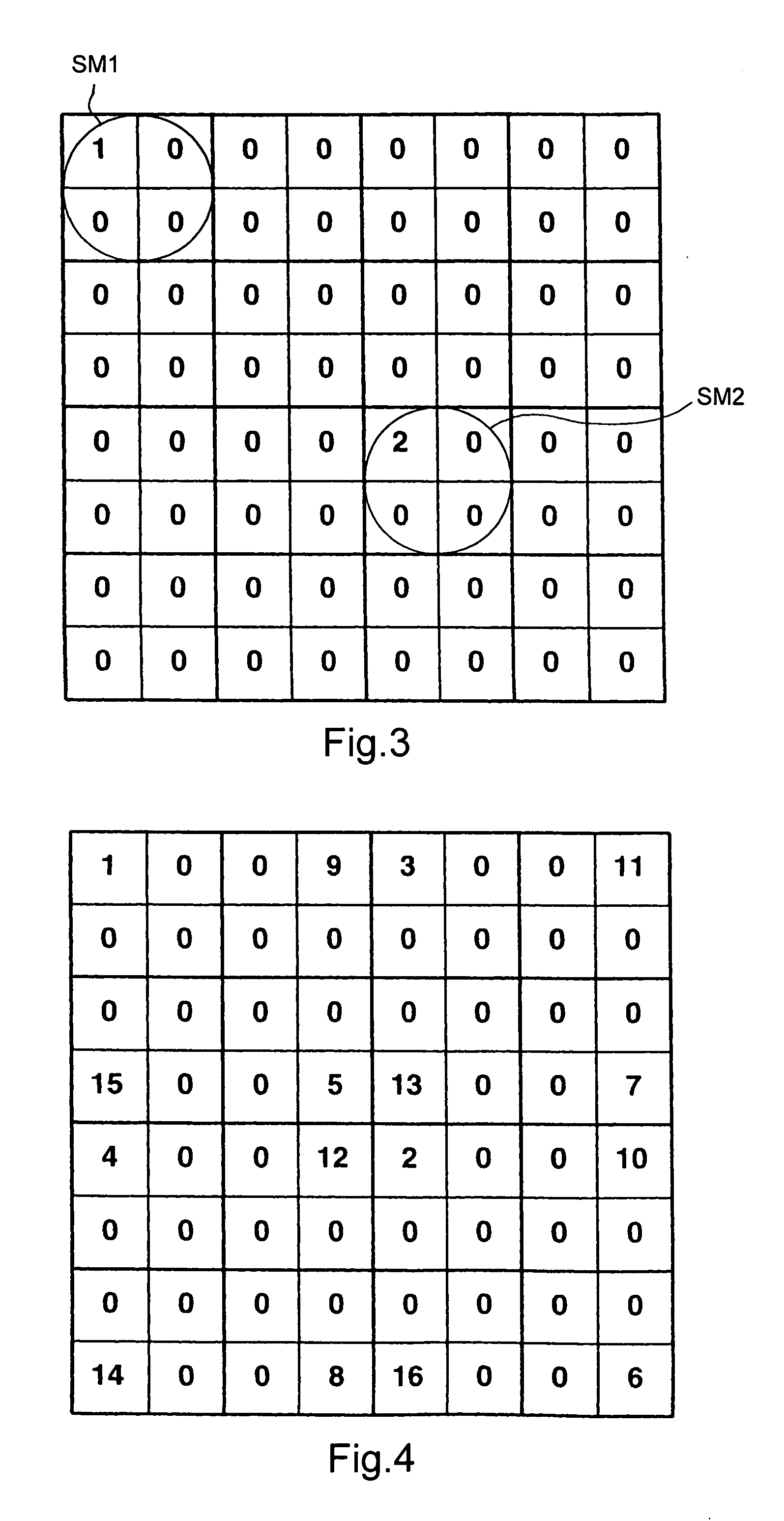Method for generating a dither mask
a mask and mask technology, applied in the field of halftoneing, can solve the problems of worm artifacts at low grey scale levels, visible artifacts or textures in printed images, error diffusion techniques,
- Summary
- Abstract
- Description
- Claims
- Application Information
AI Technical Summary
Benefits of technology
Problems solved by technology
Method used
Image
Examples
example
[0034] Assume that a dither mask is to be generated for use for the halftoning of a grey scale image having only 4 grey scale levels. In practice this is usually at least 256. The master matrix should have a number of elements being an integer plurality of the number of grey scale levels, the integer value being at least two. Assume that this integer value is chosen to be 16, thus defining an 8×8 master matrix having 64 matrix elements. As demonstrated in FIG. 1, an initialization value being zero is assigned to each element of the master matrix. The master matrix is divided in 16 equally sized 2×2 sub-matrices. Hence each sub-matrix includes four elements, being as many elements as the number of grey scale levels of the separation image. As demonstrated in FIG. 2, the sub-matrices are ranked by assigning an incremental integer value to each of the sub-matrices, starting with the integer value one and ending with the integer value 16. Subsequently, the initialization value of each e...
PUM
 Login to View More
Login to View More Abstract
Description
Claims
Application Information
 Login to View More
Login to View More - R&D
- Intellectual Property
- Life Sciences
- Materials
- Tech Scout
- Unparalleled Data Quality
- Higher Quality Content
- 60% Fewer Hallucinations
Browse by: Latest US Patents, China's latest patents, Technical Efficacy Thesaurus, Application Domain, Technology Topic, Popular Technical Reports.
© 2025 PatSnap. All rights reserved.Legal|Privacy policy|Modern Slavery Act Transparency Statement|Sitemap|About US| Contact US: help@patsnap.com



